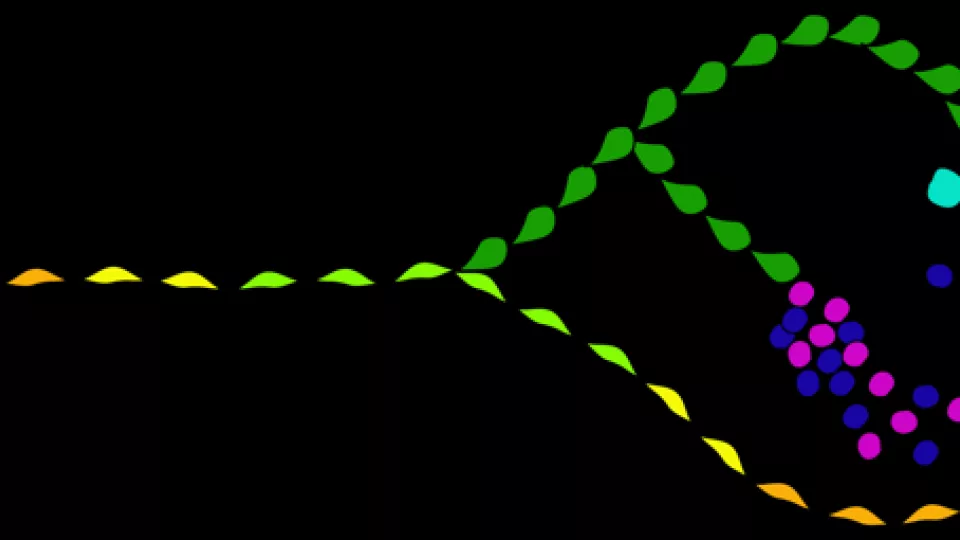Using a laboratory model of human stem cell development and by looking at the expression of blood cell and endothelial cell genes in each individual cell, they found a progression from an endothelial state, to a mixed endothelial/blood state, to a blood-only state. This is the first study showing the molecular processes of this transition in the human developmental context.
“Understanding how the first human blood cells develop will provide missing clues for us to generate blood stem cells in the laboratory for use in the treatment of blood disorders and malignancies”, says Niels-Bjarne Woods, in charge of the study.
The blood running through our veins is composed of billions of specialized cells, responsible for many important functions required for life, including providing oxygen to all tissues in our body and providing immune responses against viruses, bacteria, and even cancer cells. During a narrow window of time in embryonic development, the first blood stem cells form. These give rise to all the blood cells you will produce in your lifetime. The birth of these blood stem cells is a transition from another cell type into blood cells - a process known as endothelial to hematopoietic transition.
The cells undergoing the transition to blood in the embryo start as endothelial cells that make up the walls of the developing arteries. During a short temporal window in development, a small number of tightly packed spindle shaped endothelial cells round up forming nascent blood, detach, and are released into the circulation. In this process, the endothelial cells undergoing the transition to blood show dramatic changes in their size and shape (from spindle shaped to the round cells of the blood).
However, what happens inside the cell during this time, as it changes shape and identity, had until now never been described at a molecular level. Thanks to single-cell molecular analysis, the scientists in Lund have now analyzed individual cells from an in vitro model of human blood development, known to comprise endothelial cells that transition to blood. The analysis revealed new populations of endothelial cells undergoing transition. These new cell populations showed differences in the repertoire of blood cell types that could be produced. which is a critically important finding in the understanding of origins of blood. Niels-Bjarne Woods explains:
“Most cell types are believed to result from a linear sequence of undifferentiated stages, progressively restricting their potential until they are restricted to the mature state. Cells arising from a transitioning process may not need to follow this rule, giving wider flexibility to which blood cell types can be produced.”
This is a significant step towards understanding how the first blood cells are formed and how numbers and types of blood cells is regulated in development.
“It would also be interesting to find out if there are any endothelial cells in the adult that can still be “triggered” to produce new blood stem cells”, says Niels-Bjarne Woods.
Publication: “Single-Cell Analysis Identifies Distinct Stages of Human Endothelial-to-Hematopoietic Transition”
Contact:
Niels-Bjarne Woods, Molecular Medicine and Gene Therapy, Lund Stem Cell Center, Lund University Sweden
+46 722 4500 98
niels-bjarne [dot] woods [at] med [dot] lu [dot] se (niels-bjarne[dot]woods[at]med[dot]lu[dot]se)
